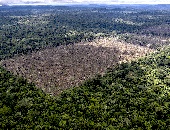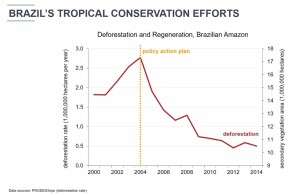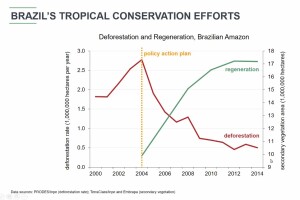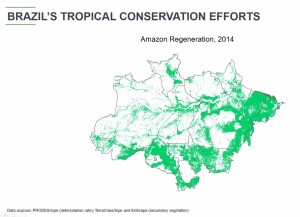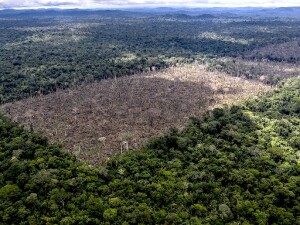The Amazon rainforest is an iconic world ecosystem often referred to as “the lungs of the planet.” Yet it is being destroyed day by day. What systems are in place to monitor loss of valuable ecosystems? How effective are these systems?
In 2019, the United Nations announced the “UN Decade on Ecosystem Restoration.” This international body estimates that restoration of 350 million hectares of degraded land between now and 2030 could generate USD 9 trillion in ecosystem services and take an additional 13-26 gigatons of greenhouse gases out of the atmosphere, gases that are warming the planet.
On March 9, 2023, Eduardo Souza-Rodrigues, Associate Professor of Economics at the University of Toronto, delivered the inaugural webinar of a new series of talks by the Federal Reserve Bank of San Francisco (FRBSF). (The series is titled the Virtual Seminar on Climate Economics.) “Restoration,” he said, “has not been a Brazilian priority.”
Protecting and restoring natural ecosystems are critical cost-effective strategies to fight global climate change. Brazil holds vast amounts of degraded lands in tropical regions and, thus, has great potential to participate in carbon sequestration. However, by design, the Brazilian innovative and successful satellite-based monitoring system focuses on combating primary forest loss and unfortunately does not detect losses on secondary vegetation.
“Each year, an area the size of Massachusetts is cut down… now we are back to 2008 levels” of forestation. He said there had been a “big recovery.”
Most of the deforestation, Souza-Rodrigues said, occurred in the southern and eastern parts of Brazil. Of the total annual deforested amount, 5 to 8 percent is converted to crop-producing land. About 60 percent is converted to pasture.
The theory was that stricter monitoring and law enforcement would lead to increased perceived risk of illegal primary deforestation. He posed the question: did monitoring have unintended consequences?
The increased risk could go one of two ways: (1) greater demand for previously deforested areas and conversion to non-forest uses in previously deforested areas or (2) lower demand for previously deforested areas and abandonment of non-forest uses in previously deforested areas.
Souza-Rodrigues covered the issue of displacement vs. deterrence. He explored at length the technical details of PRODES (Program to Calculate Deforestation in the Amazon) and the difficulties of monitoring regeneration (or lack thereof).
The central problem appeared to be that the current method of detection was flawed. “Regeneration is invisible to monitoring.”
The researchers carried out “counterfactual exercises” and looked at the social benefits of deforestation vs. restoration.
No monitoring of the destruction of the rainforest would give a social benefit of between $762 million to $1.2 billion. However, monitoring (and therefore preventing the destruction) would give a social benefit of $2.3 billion to $3.65 billion.
“Monitoring is really helpful,” he concluded. Although it costs $60 million a year, the benefits it brings are high.
In the words of Franklin D. Roosevelt, “A nation that destroys its soils destroys itself. Forests are the lungs of our land, purifying the air and giving fresh strength to our people.” ♠️
The figures are from the webinar. Permission pending.
Click here to find out about the FRBSF Climate Seminar Series.
The photo is from the Purdue University website: https://www.purdue.edu/newsroom/releases/2020/Q4/deforestation-drove-massive-amazon-rainforest-fires-of-2019.html

